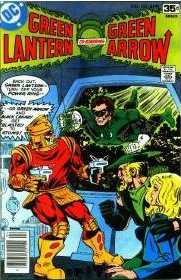
Space: 1999, Vol 2, No 6
"Instinctively he exhales, forcing all the air from his lungs, delaying their own explosive decompression... Yet even so he has but fifteen seconds..."
"Like any properly trained man in good health, he could survive in vacuum for at least a minute - if he had time to prepare for it. But there had been no time; he could only count on the normal fifteen seconds of consciousness before his brain was starved and anoxia overcame him. Even then, he could still recover completely after one or two minutes in vacuum - if he was properly recompressed; it took a long time for the body fluids to start boiling, in their various well-protected systems. "
Sir Arthur has it about correct: roughly nine to fifteen seconds of consciousness
"2001" was neither the first nor the last science fiction story to feature a character surviving unprotected exposure to space. There are a number of science fiction stories with scenes in which a character is exposed to space without a space suit (or at least without a space helmet) and survives. Here is a brief list of some of the science fiction stories and movies that have featured scenes in which a human survives an unprotected exposure to space.


This list does not list the many movies and science fiction stories in which human vacuum exposure is treated with no attempt at realism; such as "Outland" (where people exposed to vacuum explode),"Total Recall" (in which Arnold Schwarzenegger can survive near-vacuum conditions by holding his breath until an alien artifact gives Mars an atmosphere), "The Empire Strikes Back" (in which Luke, Leia, and Solo exit the ship to walk around an "asteroid" with no suits), or Jules Verne's From Earth to Moon, in which the characters open and shut the hatch of their capsule while in transit (but open it so quickly that "scarcely a particle of air" escapes.)
Another form of vacuum exposure in science fiction is the use of variant forms of the "skinsuit," a spacesuit that maintains mechanical pressure on the skin, but does not provide an airtight seal. This suit was originally proposed by Webb as the "Space Activity Suit" (Aerospace Medicine, 39 (1968), pp. 376-383), but was introduced into science fiction in an article by Jerry Pournelle. There are many variants of these in science fiction, ranging from the reasonable to the highly implausible. A difficulty in long-term use of such a suit is that tissue exposed to vacuum, even if mechanical pressure prevents boiling of the fluid, will nevertheless tend to desiccate in vacuum.
In response to readers' letters, Schachner defended his character's survival of an exposure to the vasuum of space in a long letter "He Would Not Explode", in Wonder Stories, April 1932. The letter starts out::
"Two of your correspondents, Messrs. Kaletsky and McCutcheon, have
attacked our story "Exiles of the Moon", on the ground that Dore Swithin should have died immediately in outer space upon being ejected from the space ship because of the total lack of pressure."
Schacter justifies the scene as written, stating:
...It is quite evident therefore, that Dore Swithin's exposure of less than four minutes to the vacuum of space would not result in his instant explosion and that there would be a fair chance of his survival. Men submerged in water for periods of over 10 minutes have survived with the use of the pulmotor. It must be remembered that Dore Swithin did not emerge scatheless. The story specifically set forth that the surface capillaries had been broken, that his face and body were terribly congested, that there was bleeding from his mouth and ears, and that it took him a long time to recover from his frightful experience."
I have yet to track down a copy of the original story. If anybody with a copy (or access to a copy) of the story could verify the reference, I would like to see it!
** In addition to the referenced short stories, Arthur C. Clarke discusses vacuum survival and justifies the events shown in his stories in his essay "A Breath of Fresh Vacuum," in his book The View From Serendip (1977).
Page by Geoffrey A. Landis,1999
Revision 2007, 2010